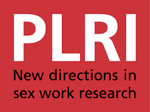By Kate Holden
Public Ledger: A prostitute, because like that paper, she is open to all parties. (eighteenth-century slang)
In April 2010 the Mercury newspaper in Hobart contained a small but historic notice. In a brief paid advertisement a conservative group in Tasmania called the Family Protection Society expressed regret for having published ads proclaiming that sex work was damaging to families and harmful to women. Scarlet Alliance, the peak body representing Australia sex workers, had taken the comment to the Anti-Discrimination Commission on the grounds that the society’s attitude was discriminatory against sex workers. Although Scarlet Alliance had received a voluntary apology of a similar nature from the Salvation Army in 2009, this was the first time such social attitudes had been formally determined as unfair. In the ferocious debate about the ethics of paid sex, the ground is shifting.
Sex work is a major Australian industry, historically ineradicable and, in many states, decriminalised and regulated. Famously ‘the oldest profession’, it is also one of the most trenchantly disputed. In the broader society it is seen as either a normal part of life or a vile, sorrowful trade. For feminism, it is associated with the fracture in ideology that splits ‘victim feminism’ from ‘power feminism’ in complicated but increasingly onerous ways. So, what is sex work? What are the problems people have with it? Why do sex workers themselves feel frustrated with traditional feminism? What are the peculiar aspects of this trade that raise such heated reactions?
‘Doxies’, ‘blowens’, ‘biters’ or ‘strumpets’ as they might have been called by the marines and convicts of the eighteenth century were among the very first white women to step onto the continent of Australia when they arrived at Sydney Cove on the Lady Penrhyn in 1788. One in five of the women had practised the trade before transportation, and, with females outnumbered five to one on the first ships, more had joined the ranks. ‘Good God what a Seen of Whordome,’ exclaimed the aghast naval lieutenant Ralph Clark on the arrival of the women convicts. Every 2 June, more than two hundred years later and only metres from where Australia’s first prostitutes disembarked, their descendents in profession gather on Circular Quay to celebrate International Whores Day and proclaim their pride, their rights and their status as loud, ‘out’, feminist whores. Among the crowd are women in wigs and platform heels working the Betty Page look, transgender persons in trousers or skirts, shyly smiling girls in jeans and jackets, dykes, queers, a few grinning men; every shape and size, various ethnicities. They come from the enormous range of sex work across the country. ‘Poor unhappy women of the town’ no more, the sex workers of Australia are mobilised, articulate and ready to claim enfranchisement.
I am among them, an out and proud former prostitute, beaming as genuinely and self-consciously as the rest as curious tourists turn our way. Twirling the emblematic red paper umbrella someone has thrust into my hand, I wonder if it’s to ward off the glare of exposure or the brisk quayside breeze, or if it symbolises a kindly cupping of community above my head. To be a sex worker in modern Australia is to inhabit a strange zone, caught between infamy and legend, decriminalisation and social censure, pity and pride.

